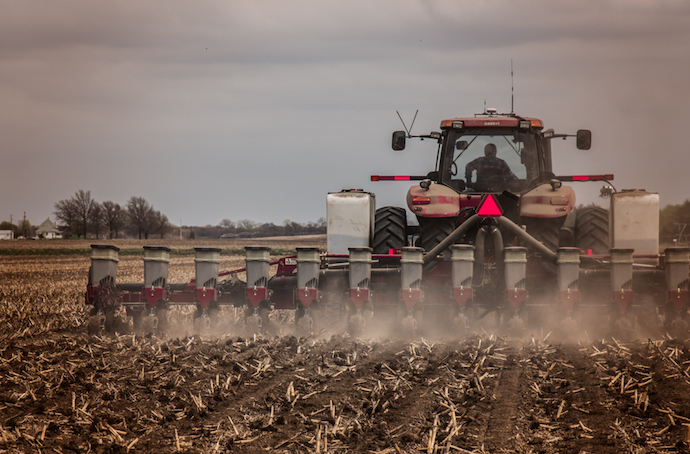Source: Central Valley Ag
Hopefully, by now, everybody is done planting. It has been a very, very long planting season for many of you, especially my neighbors to the North. But mostly by now, we can begin to reflect and evaluate just how our planting season went. This reflection includes walking our fields and evaluating stand and emergence consistency. I am a big believer in the importance of the Net Effective Stand Percentage.
In short, the Net Effective Stand Percentage, or NESP is the percentage of viable plants that you have after you remove doubles, skips, and late emerges from your target population. This number is a completely unbiased evaluation of our planter performance and environment that we planted in and had after planting. I think this evaluation is a hugely valuable aspect our growing season; it is basically out final exam to a semesters worth of planning and preparation in the winter.
So in evaluating our NESP, we need to look at spacing quality, skips, doubles and late emergers. Each of these tells us something different about our seed selection, ride quality, or planter performance. If we are seeing seeds that are unevenly spaced, it means one of two things. This problem can be caused by our seed meter itself. We can test seed meters to verify if they are having a seed release problem very easily. But if it is not the seed meter, it means is that seed is bouncing down the seed tube instead of sliding down it.
Every time a seed bounces, we lose about one inch of spacing quality. There are a few ways we can improve this problem, the easiest and cheapest is to slow down. Planting 4.5 mph or slower will almost always improve ride quality. But, if that isn’t a viable option, we may need to evaluate your downforce system to look at what kind of economic gains we can realistically expect. Finally, there is always technology like speed tubes that will deliver our seed to the furrow directly where we want it. Using them should eliminate issues in spacing.

Skips and doubles are fairly easy to figure out. They are row specific, or they occur across the entire planter. If you see an issue that occurs on less than ¼ of your planter, you probably have a seed meter issue. If you have a problem that is happening across the entire planter, it can be a number of factors. If the problem ends with a hybrid or variety change, then we are looking at a seed size, or a seed treatment or coating that didn’t work well with your meter.
“Consistent” issues with skips and doubles across the planter can also be an indication that we may be looking at the need for more talc or graphite to improve seed flow. Seldom do we think to do it, but testing and repairing your meters after planting and before storage is a better option than waiting for spring. It is one less headache next year and ensures proper storage this winter.
Then finally there is the consistency with which our plants have emerged. I discuss it often, but we need to see our plants out of the ground within 24-48 hours of each other for our best yield potential. There is plenty of research out there that shows yield rapidly falls off when a plant comes up more than 48 hours after its neighbor. This delay is almost always caused by inconsistency of seeding depth. I could launch into a whole other discussion about downforce, but to keep things short, there is yield in good emergence consistency, and it can be lost quickly.
So the quick synopsis of today’s discussion is that evaluation of our NESP right now with your ACS Equipment Technician, or your trusted advisor is not just recommended but is really mandatory. If our NESP score is coming back below 95% we are losing some cash. If that number is in the 80’s, we need to fix something, and now is the time to do it. CVA has put together two very attractive financing options, one for Ag Leader, and one for Precision Planting. Both programs give you the grower 0% interest through 2020 and let us make our payments for planter hardware in November after the crop is in the bin.
Couple this with some great rebate offers and other programs from Ag Leader and Precision Planting, and it's a great opportunity for us to get the planter you have turned into the planter you need. It is often said that “time heals all wounds.” This is true with every planter season I have been a part of for the last 20 years.
What was an issue during planting and emergence is often forgotten by the time the combine rolls, and is but a distant memory by next April. Few things are as painful as repeating the same mistake. Now is a great time not just on the calendar, but for your expenditures and revolving capital to get the planter ready for the 2019 growing season.



![[Technology Corner] Autonomy & Robotics Take Center Stage](https://www.precisionfarmingdealer.com/ext/resources/2026/01/12/Autonomy--Robotics-Take-Center-Stage.webp?height=290&t=1768253759&width=400)


